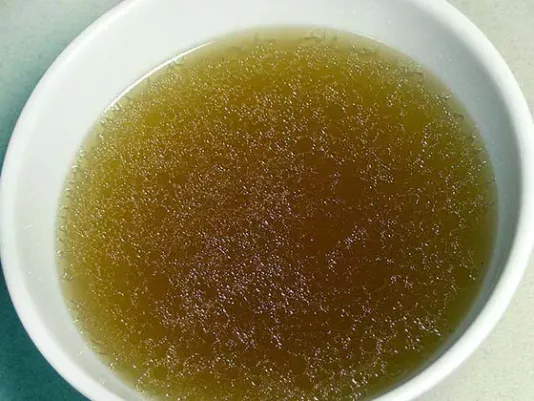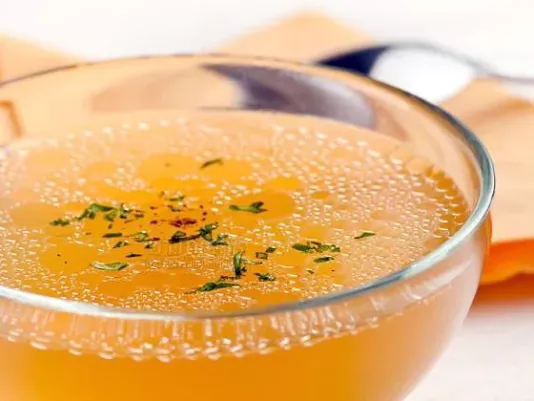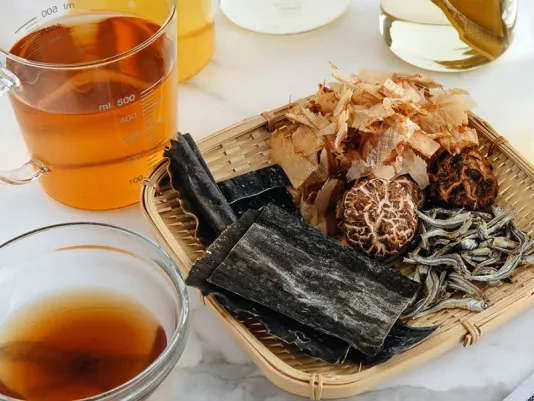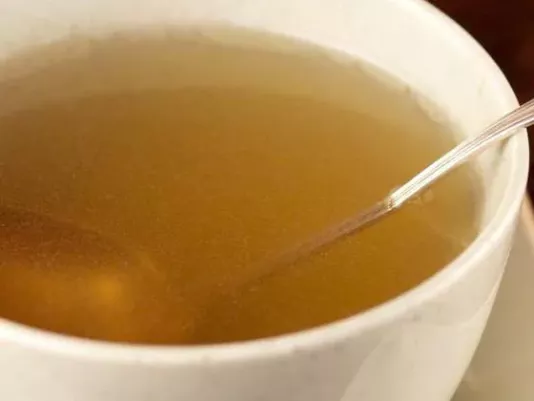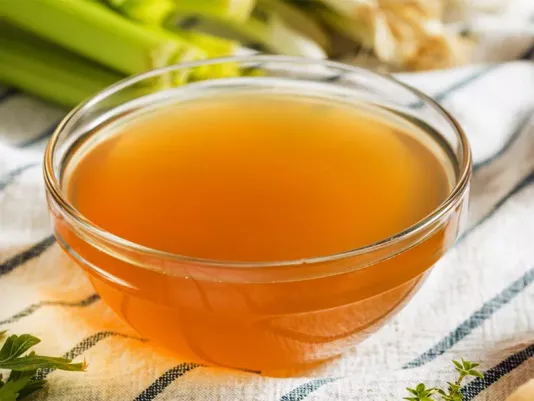Broths and Bases
Broths and bases have always been the true heart of cooking for me, since many dishes begin with them. I like to cook meat broth slowly, on low heat, so that it becomes as rich and aromatic as possible. For me, it is always the base for soups, sauces, and even some main dishes, as such a broth gives them depth. I use mushroom broth when I want to emphasize the flavor of vegetables or grains – it adds a light forest aroma and special delicacy. Dashi broth is my way of experiencing Japanese cuisine at home: it cooks quickly but has an amazing flavor thanks to the combination of seaweed and fish. I realized that a well-prepared broth always makes dishes tastier, even if the main ingredients are very simple. For me, it is not just a cooking liquid but a foundation that defines the character of the dish, making it harmonious and balanced.
Varieties of Broths and Bases
Meat Broths as a Classic Foundation
Meat broths have always been the base for most of my soups and sauces. I like to cook them from different types of meat – chicken, beef, or turkey – and each version has its own unique flavor and aroma. When I cook broth, I always add carrots, onions, celery root, and bay leaves to make the flavor rich and harmonious. It is important for me to cook meat broth slowly, on low heat, so that it stays clear and rich at the same time. I use it not only for soups but also as a base for sauces or stews, as it adds depth to dishes and makes them more nutritious. Sometimes I like to freeze the finished broth in portions so I always have it on hand for quick cooking. I realized that properly cooked meat broth makes any dish much tastier and more filling, even if simple ingredients are used. For me, it is a true culinary foundation without which the kitchen would be incomplete.
Mushroom Broth in Everyday Cooking
Mushroom broth was a real discovery for me because it gives dishes a special aroma and depth that are hard to achieve with other ingredients. I like to cook it with fresh champignons, porcini, or forest mushrooms, and sometimes I add dried mushrooms for a more intense flavor. When I prepare mushroom broth, I always use onions, carrots, and a few spices to highlight the natural mushroom aroma, but I never overwhelm their flavor with too many additions. For me, this broth is perfect for preparing soups, sauces, or even as a base for risotto. I realized that it can make vegetable dishes more expressive and satisfying, even without meat. I often freeze a few portions of mushroom broth to always have a ready base for quick cooking. For me, it is a light yet very aromatic option that helps diversify the daily menu and give it a special character.
Dashi Broth and Its Features
Dashi broth became a true find for me when I started exploring Japanese cuisine. Its preparation takes very little time, but the result always impresses with its depth and unique flavor. I cook dashi with kombu seaweed and bonito flakes – a combination that creates the well-known umami taste. For me, this broth became indispensable in preparing miso soup, but I also use it as a base for noodles or vegetable dishes. I like that dashi is so versatile: it makes dishes light yet rich at the same time. When I don’t have time to prepare complex sauces or broths, dashi is the perfect solution for me, as it cooks quickly and always gives the right result. I realized that this broth can be a great way to diversify the home menu by adding elements of Japanese cuisine. For me, dashi is an example of how simplicity combines with refined flavor.
Other Types of Broths and Culinary Bases
In addition to classic meat and mushroom broths or Japanese dashi, I often use other types of bases that help diversify cooking. For example, vegetable broth became indispensable for me when I want to prepare light soups or meat-free dishes. I cook it with carrots, onions, celery, and herbs, and it gives dishes delicacy and freshness. I use fish broth less often, but it works perfectly for fish soup or for making sauces for seafood. Sometimes I prepare combined broths, mixing several types of ingredients to achieve a more complex flavor. For me, such bases are a way to give dishes a new sound and make even a simple menu more diverse. I realized that different types of broths can be used depending on the mood and needs: richer ones for festive dishes and lighter ones for everyday meals. For me, culinary bases are always the starting point from which a dish grows, and the final result depends on them.
My Experience with Broths and Bases
I can say that broths and culinary bases have always been indispensable helpers for me in the kitchen. I realized that any dish begins with them, as they define its mood and taste. For me, meat broth is a classic that always gives satiety and depth, mushroom broth – lightness and aroma, dashi – refinement and special character. I like that broths can be prepared in advance and stored in the freezer, always having a ready base for culinary experiments. I often use them for cooking soups, sauces, stews, risotto, or even for baking. My experience has shown that it is broths that help create dishes loved by the whole family and make the menu more diverse. For me, they became not just a cooking liquid but a true foundation on which all of cooking rests.
